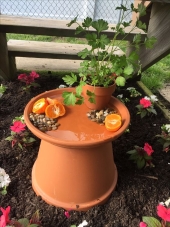
 5
5




Striving to grow things as naturally, simply, and cheaply as possible! 
My YouTube channel
 6
6




Iterations are fine, we don't have to be perfect
My 2nd Location:Florida HardinessZone:10 AHS:10 GDD:8500 Rainfall:2in/mth winter, 8in/mth summer, Soil:Sand pH8 Flat
 3
3





Striving to grow things as naturally, simply, and cheaply as possible! 
My YouTube channel
 5
5




 6
6




I am creating the ultimate educational platform to make permaculture accessible to everyone.
To help, please answer a couple of questions (anonymously) at: https://nisandeh.com/permies-demographics-questionnaire/
 4
4




 3
3




Jan White wrote:Steve, which plants do you like best for your living mulches

Striving to grow things as naturally, simply, and cheaply as possible! 
My YouTube channel
 5
5




 2
2




“We can complain because rose bushes have thorns, or rejoice because thorn bushes have roses.” — Abraham Lincoln
 6
6




Best luck: satisfaction
Greatest curse, greed






 4
4




I'm only 64! That's not to old to learn to be a permie, right?
 2
2




Steve Thorn wrote:Which is your preference?
I used to use mostly dead mulch, but have recently switched to using mostly living mulch. The living mulch eventually turns into dead mulch, so it has the benefits of dead mulch and helps build the soil, and then more living mulch comes up to replace it.
Invasive plants are Earth's way of insisting we notice her medicines. Stephen Herrod Buhner
Everyone learns what works by learning what doesn't work. Stephen Herrod Buhner
 3
3




Best luck: satisfaction
Greatest curse, greed
 7
7




Zone 6, 45 inches precipitation, hard clay soil




 2
2




 1
1




 3
3




Best luck: satisfaction
Greatest curse, greed
 3
3




“We can complain because rose bushes have thorns, or rejoice because thorn bushes have roses.” — Abraham Lincoln
 2
2




Best luck: satisfaction
Greatest curse, greed




Explore the Permies Digital Market - ebooks, movies, building plans, courses, and more. Oh my!






Thekla McDaniels wrote:Nigella,
When you have a garden again, I will try the blackseed nigella, but if somebody gets there first, just let us all know!
Best luck: satisfaction
Greatest curse, greed
 2
2




Finally! An Online Garden Master Course for permies!
How Permies.com Works



|
Make yourself as serene as a flower, as a tree. And on wednesdays, as serene as this tiny ad:
12 DVDs bundle
https://permies.com/wiki/269050/DVDs-bundle
|






